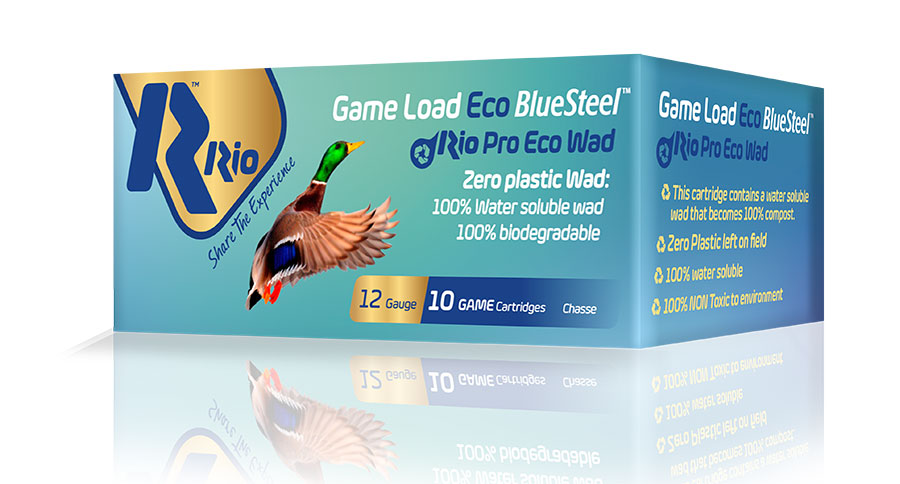RIO Ammunition just announced an ammo breakthrough with a 100% biodegradable wad, to be used in their BlueSteel line.
Conscious hunter and shooters know to pick up their spent shotgun hulls. It's part of their duty, but plastic wads are almost never found and recovered.
That's why news of RIO Ammunition's new biodegradable shotgun wad caught our attention, as it can be considered nothing less of a breakthrough.
Set to be unveiled at the 2019 SHOT Show, these new wads are claimed as 100% water-soluble and are made of totally biodegradable material. All their additives are of vegetal origin, making the wad compliant with ASTM International standards.
In fact, that means the wad doesn't just avoid harm to the environment, but it turns into compost (CO2, mineral salts, and biomass) and eventually go to work as a high-quality fertilizer. The next time you fire away at a fleeing bird while goose hunting, you can feel better about the impact your having. It's a small consolation for a bunch of missed shots, but hey, whatever works. Now you're fertilizing the field!
The new wad will be incorporated into RIO's BlueSteel line of shotgun shells.
"The hydro soluble wad is a testament to RIO's commitment towards innovation. We continuously work to make our shotshells more precise, more reliable and also reduce its impact on the environment. Now we can offer a shotshell with the two elements that are expelled from the shotgun—the shot and wad—having a limited, even positive impact on the environment," said Eduardo Baeza, RIO Ammunition General Manager.
Non-degradable plastic shotgun wads have lasted too long, quite frankly, but any effect on shot patterns and overall accuracy from switching to biodegradable shooting wads remains to be seen. If RIO went to the trouble of designing them, they likely took that into full consideration.
This new product is truly a breakthrough in shotgun ammunition, perhaps the biggest since steel shot advancements began happening. Environmental impacts (and approaching them in a practical way) should be on the minds of all outdoor industry businesses.
We're pretty sure no other box of shells could say it does so much to protect aquatic environments and natural resources.
NEXT: WHAT ARE THE DIFFERENT WILD TURKEY SUBSPECIES?
WATCH




